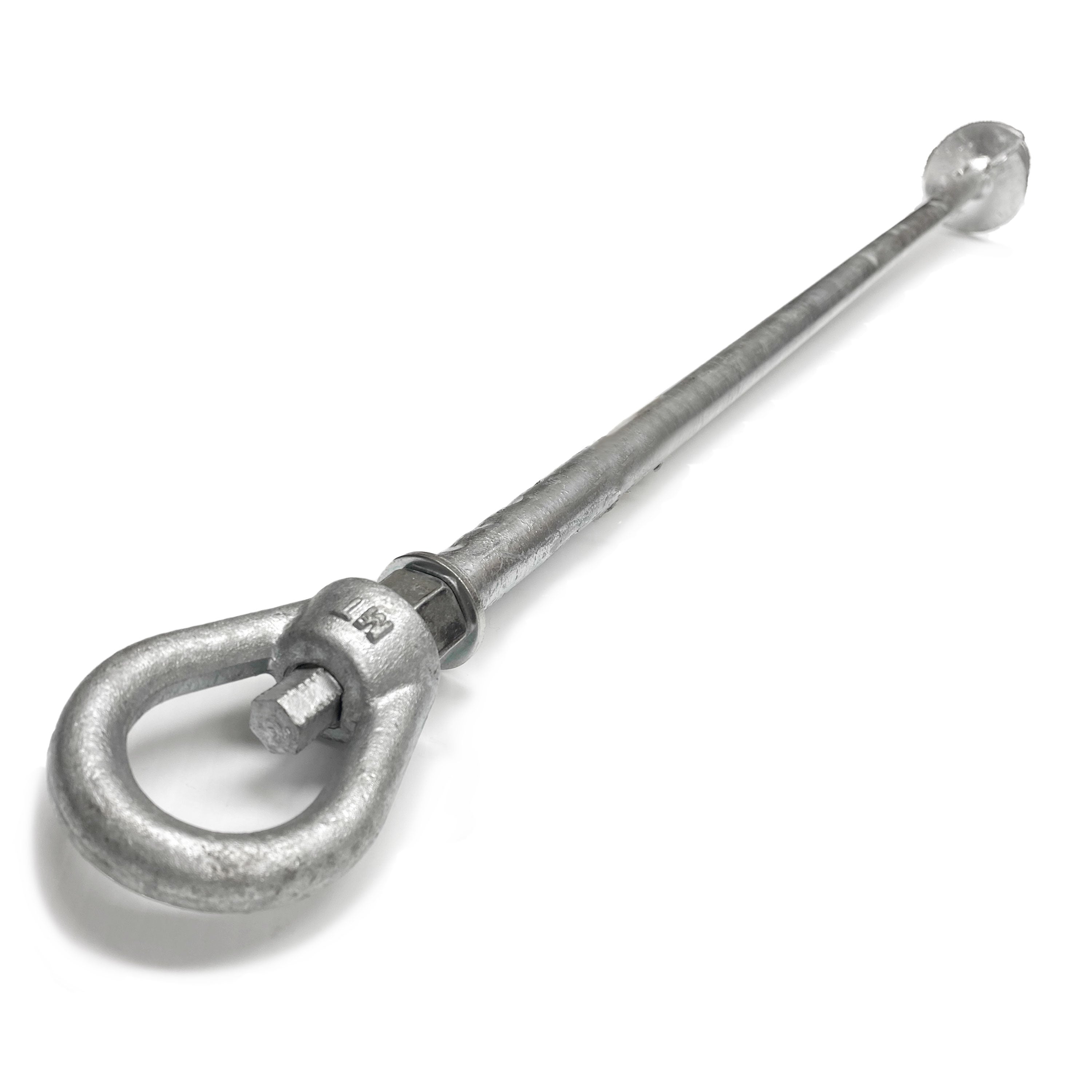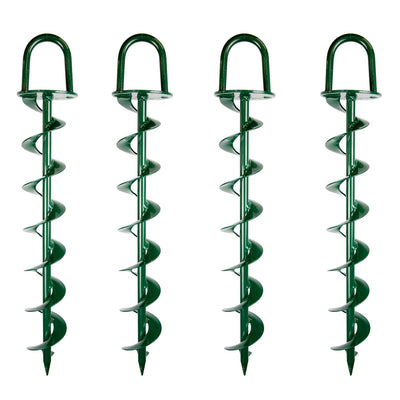Check Out the Various Types of Ground Anchor for Your Next Task
When getting started on a construction or landscaping job, recognizing the various types of ground supports offered is crucial to making certain both stability and sturdiness (Ground Anchor). From auger supports, which stand out in diverse dirt problems, to risk anchors made for temporary installments, the alternatives are various. Furthermore, concrete and screw supports present special advantages in specific situations, while deadman anchors are customized for applications needing resistance to lateral forces. The option of an appropriate support type can considerably affect the overall success of your project, prompting additional exploration into their corresponding advantages and applications.

Auger Anchors
Auger supports are a prominent selection in numerous building and landscape design tasks because of their distinct style and efficient securing capabilities. These supports include a helical screw-like shaft that is driven into the ground, enabling a stable and protected hold. The spiral style helps with simple installment and optimizes resistance against lateral pressures, making auger anchors especially reliable in applications such as secure fencing, temporary frameworks, and erosion control.
The installment process of auger supports is reasonably uncomplicated. They can be by hand or mechanically mounted, relying on the dimension and called for depth. This flexibility allows for their use in varied soil conditions, from sandy to clayey surfaces. Auger anchors can be easily eliminated and recycled, which adds to their cost-effectiveness and sustainability.
Among the significant advantages of auger anchors is their ability to distribute loads uniformly across the bordering soil, decreasing the threat of dirt disturbance and decreasing ecological effect. Furthermore, they are much less prone to loosening or heaving gradually compared to typical securing approaches. Auger supports are a superb choice for projects needing reputable and resilient anchoring solutions.

Stake Anchors
When it comes to protecting structures in a variety of exterior applications, risk anchors use a reputable and simple solution. These anchors are typically created from long lasting materials such as steel or light weight aluminum, developed to stand up to ecological tensions while providing optimum stability. Their easy style enables quick installment, making them an ideal option for short-lived or permanent anchoring requirements.
Risk anchors are especially useful in protecting tents, covers, and various other light-weight structures against wind and weather condition. They function by being driven into the ground at an angle, developing a solid hold that withstands pull-out forces - Ground Anchor. The efficiency of stake anchors depends upon a number of factors, consisting of dirt kind, moisture content, and the angle of installment
For added security, several stake anchors include attachment factors for straps or ropes, allowing for tension adjustments as required. In applications such as landscaping or building and construction, they can effectively stabilize equipment or frameworks on uneven surface. In general, risk anchors supply a cost-effective and flexible remedy for securing numerous outside installments, making them a recommended choice for specialists and do it yourself enthusiasts alike.
Concrete Anchors
Concrete supports offer a durable solution for safeguarding structures to concrete surface areas, ensuring go to this web-site stability and safety in various applications. These anchors are vital for projects ranging from residential building and constructions to large-scale industrial setups. They are available in different types, including development supports, glue anchors, and undercut anchors, each made for particular load needs and environmental problems.
When installed,Growth anchors depend on mechanical mechanisms to grip the concrete. They are perfect for medium to sturdy applications. Sticky anchors use high-strength epoxy or resin to bond the anchor to the concrete, supplying premium load-bearing capabilities, especially in cracked concrete circumstances. Undercut anchors produce a special shape within the concrete, supplying exceptional holding power, particularly in applications where tensile lots are prevalent.
When performed properly, concrete anchors dramatically enhance the architectural integrity of different projects, making them indispensable in contemporary building methods. Understanding the certain needs of your project will certainly help in picking the ideal kind of concrete support for the task.
Screw Anchors

Screw supports are a flexible attaching solution that can be efficiently utilized in a range of applications where typical concrete supports may not be adequate. These supports include a helical layout that enables them to be easily driven into the ground, making them suitable for usage in soil and various other substratums. Their one-of-a-kind framework supplies outstanding holding power and resistance to pull-out forces, making them suitable for many projects, from landscape design to structural support.
One of the primary benefits of screw supports is their convenience of setup. They need minimal tools and can often be mounted without the requirement for excavation, which saves both time and labor prices. Additionally, screw anchors can be removed and recycled, supplying a lasting option for momentary applications.
Screw anchors are specifically valuable in locations where soil problems are challenging, such as sandy or loosened soils. Their capability to be mounted at varying depths enables customization based upon particular job needs. In general, screw anchors give a reliable and efficient anchoring approach, making them an exceptional option for designers and specialists looking for efficient solutions for their projects.
Deadman Anchors
Deadman anchors act as a robust service for stabilizing structures in challenging conditions, especially where traditional securing techniques may fail. These supports include big, hefty items buried underground, which create resistance versus side forces. The design typically entails a straight element, such as a block of concrete or a steel plate, buried in the dirt, to which bands or cords are use this link connected.
The performance of deadman anchors hinges on their capacity to disperse lots over a bigger location, lowering the risk of failing in unpredictable soil conditions. They are especially valuable in applications such as maintaining walls, temporary structures, and incline stabilization, where dirt movement can endanger the honesty of the structure.
Installation of deadman anchors calls for cautious preparation to guarantee they are placed at the correct depth and alignment, optimizing their load-bearing ability. While they may need even more labor and product than lightweight supports, their integrity in damaging problems makes them very useful for long-term projects. Additionally, deadman anchors are flexible and can be adjusted to numerous applications, making them a best selection for engineers encountering unique difficulties in their jobs.
Verdict
Auger anchors succeed in diverse dirt conditions, while stake anchors fit momentary applications. For concrete surfaces, expansion and adhesive supports provide reliable options, and screw anchors use convenience in challenging terrains.
In addition, concrete and screw anchors present distinct benefits in specific situations, while deadman supports are customized for applications requiring resistance to lateral forces - Ground Anchor.Auger supports are a prominent selection in various building and construction and landscaping jobs due to their special layout and reliable anchoring capacities. They come in different types, including growth anchors, sticky anchors, and undercut supports, each made for specific load requirements and ecological problems
Sticky anchors use high-strength epoxy or material to bond the anchor to the concrete, offering remarkable load-bearing capacities, specifically in fractured concrete situations. In general, screw anchors offer a reliable and trusted securing approach, making them a this website superb selection for contractors and designers looking for effective remedies for their projects.